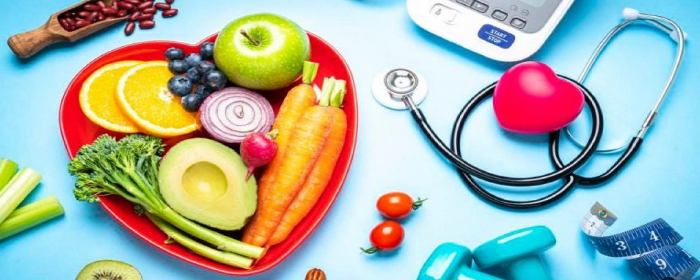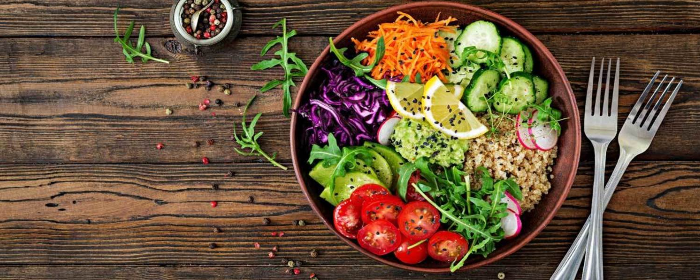
by admin | Jul 20, 2022 | Health Awareness
Gardening provides benefits beyond beautiful flowers and homegrown vegetables. The act of digging in the dirt offers several unexpected boosts to your physical and mental health and the gratifying experience of growing your own food.
If the warmer weather has you ready to stop and smell (and prune) the flowers, then rest assured that your hobby is keeping you healthy!
Outdoor Gardening Helps Your Body Fight Disease
Soaking up the sun while digging in the dirt allows your body to turn that sunlight into a vital nutrient: vitamin D.
Vitamin D strengthens your bones, boosts your immune system, and helps to lower your risk of cancer and multiple sclerosis. While you need to balance your UV rays with your risk of developing skin cancer, know that your time outside serves a critical function in maintaining your immune health.
Gardening Reduces Stress
Gardening has been shown to improve your mood, reduce symptoms of depression and anxiety, and even increase self-esteem. In a 2011 study of therapeutic horticulture, researchers found an overall improvement in mental health related to gardening, with the benefits lasting several months.
Gardening Reduces the Risk of Dementia
Several studies linking cognitive function and memory skills to horticulture find that gardening can trigger and improve the brain’s production of memory-related nerves. In addition, patients already experiencing symptoms of dementia see an improvement in symptoms after participating in horticulture therapy.
Gardening Lowers Your Risk of Heart Disease
While most of us think of heart-healthy exercises as running, biking, or another heart-rate–boosting activity, physical exercise and stress reduction provided by gardening can also offer substantial heart health benefits.
A 2013 study found that gardening can cut the risk of experiencing a heart attack or stroke by up to 30%. The connection to the natural world offered through gardening can provide significant, long-lasting mental and physical benefits. For more health awareness blogs, please visit www.stemedix.com/blog.

by admin | Jul 11, 2022 | Health Awareness
For many people, nutritional supplements are a part of their daily routine. Whether you take specific supplements or a multivitamin, you want your nutritional supplements to be as effective as possible.
This is why it’s important to take your supplements in a way that allows them to be properly absorbed so that your body receives all of the nutrients it needs. Read on to learn how the time of day you take your nutritional supplements can impact how effective they are.
What Time of Day Should I Be Taking My Supplements?
While you may think that time is only something your mind is aware of, all of the systems within your body run on an elaborate schedule. This is how things like the circadian rhythm and eating patterns work. Your body learns a schedule over time and adheres to it so that you can feel your best. As it turns out, the time that you take your nutritional supplements can be affected by this schedule.
The purpose of taking any nutritional supplement is to provide your body with the vitamins and minerals that it needs. To help your nutritional supplements be as effective as possible, they may need to be taken at certain times.
For most supplements, the ideal time is in the morning when you wake up. This is beneficial for a variety of reasons. Taking your supplements in the morning means you can experience their benefits throughout the day, when you’re most active. It also means that you can keep track of exactly how your supplements make you feel, determining which you need to continue, and which are no longer benefiting you.
Some supplements are required to be taken at a specific time because they can produce adverse effects. For example, vitamin B6 is known to disrupt sleep patterns if taken too close to bedtime. When you begin taking any new supplement, it is always wise to speak to your doctor and ask what time of day your supplements should be taken.
For more health awareness blogs, please visit www.stemedix.com/blog.

by admin | Jun 29, 2022 | Health Awareness
High blood pressure, also known as hypertension, affects almost half of the adults in the U.S. Hypertension causes blood to apply long-term force to the artery walls, making sufferers more susceptible to heart disease and stroke.
While high blood pressure is concerning, it’s also a manageable condition. Here are several of the most effective ways you can lower your blood pressure without medication.
1. Exercise
One of the best ways to reduce your blood pressure in the long term is to stay active.
2. Maintain a Healthy Weight
Overweight patients who lose as little as five to ten pounds can lower their blood pressure, and even light physical activity can have the same effect.
3. Add Healthy Foods to Your Diet
Studies show that adding certain foods to your diet can help lower your blood pressure. These foods include:
- Potassium-rich bananas
- Sweet potatoes
- Protein-rich lean meats
- Fish
- Polyphenol-supplying berries
- Magnesium-rich vegetables, legumes, and whole grains
- Flavonoid-supplying dark chocolate
- Garlic or garlic extract
As you increase your consumption of healthy fruits, vegetables, lean meats, and whole grains, you’ll find an added benefit of less appetite for foods that can raise your blood pressure.
4. Reduce Consumption of Hypertension-Supporting Foods and Drinks
Studies show that reducing your consumption of sugar, refined carbohydrates, and prepackaged foods can lower your blood pressure. Additionally, drinks like alcohol and caffeine can raise your blood pressure.
5. Stop Smoking
Healthy blood pressure is another reason to quit smoking. The chemicals in tobacco can damage your blood vessel walls, causing inflammation and increasing the pressure.
6. Lower Your Stress Levels
Higher stress levels equal higher blood pressure, so taking steps to lower stress can benefit your physical health. Activities like yoga help your body and mind. Practicing meditation helps you find calm in any situation, and the simple act of petting an animal can instantly lower your blood pressure.
7. Cook at Home
Cooking at home lets you control the ingredients in your meals, namely sodium. Restaurant meals can have up to six times the amount of sodium as a home-cooked meal. Reduced sodium can result in reduced blood pressure.
8. Improve Your Sleep
A poor night’s sleep can negatively affect your blood pressure. People who sleep six hours a night or less have consistently higher blood pressure.
If you try these methods and find your blood pressure remains consistently high, consult your physician for the next steps, such as medications to control your hypertension.
For more health awareness blogs, please visit www.stemedix.com/blog.

by admin | Jun 15, 2022 | Health Awareness
According to a poll in January 2022, about 10% of Americans over 18 consider themselves vegan or vegetarian. The sudden rise in popularity of a meat-free lifestyle is attributed to environmental concerns, animal welfare concerns, and increased convenience as new plant-based meats become widely available.
Whether your desire to eliminate or just cut back on meat is based on health, cultural, environmental, or religious reasons, switching to a plant-based diet is a big step.
The easiest way to shift to a vegetarian diet and stick with your changes is to begin gradually to make the transition more comfortable and nutritionally stable. We advise taking these basic steps.
Step 1: Evaluate Your Current Diet
Before making any significant changes, you should understand your starting point. Keep track of the foods you currently eat. Next, take note of the meals and snacks that are vegetarian.
As you shift your diet to more vegetarian meals, start incorporating vegetarian dishes you already enjoy and alternating them with your old omnivore eating habits.
Step 2: Revise Your Old Favorites
Look at the favorite meals you’ll miss the most when you’re entirely vegetarian. Begin looking for meat-free versions you can also love. For example, spaghetti with meatballs can easily become spaghetti with marinara sauce, or you can find a plant-based substitute for your favorite meatballs.
Step 3: Try New Recipes
As you adjust to your new diet, search for recipes to round out your menus. First, try checking out some vegetarian cookbooks from the library until you find one full of recipes you enjoy. Then, get adventurous in the kitchen with new products and meal ideas.
Step 4: Make the Shift, One Meal at a Time
Many people find that breakfast is the easiest meal to make meatless. You can begin your journey to vegetarianism by eliminating meat in your first meal of the day — and work your way up to all three. Allow yourself some room to adjust as you overhaul your diet.
Step 5: Evaluate Your Current Diet Again
Everyone faces significant challenges in getting the proteins, whole grains, fruits, and vegetables their bodies need. So, take the time to track your eating habits and ensure you’re getting enough grains, legumes, vegetables, fruits, and variety in your diet.
If your diet lacks certain nutrients, make a list of foods to incorporate to give your body all of the fuel it needs.
For more health awareness blogs, please visit https://www.stemedix.com/blog.

by admin | Jun 8, 2022 | Health Awareness
From cleansers and creams to masks and serums, there are tons of skin care products on the market today. But having healthy, glowing skin requires more than a multi-step skincare routine. In fact, what’s going on inside your body has a huge impact on your skin.
Keep reading for some quick tips on how to develop healthy skin, starting from within.
Eat a Balanced Diet
A balanced diet rich in vitamins, minerals, and plenty of lean protein has been linked to clearer and healthier skin. Focus on eating whole foods to avoid the high levels of sugar and fats commonly found in processed foods and linked to acne breakouts.
Aim to incorporate as much vitamin C and omega-3 fatty acids as possible, since they are essential for nourishing your skin.
Get Plenty of Sleep
Your body needs time to recharge and repair itself while you sleep. If you don’t get enough sleep each night, you may notice your skin looking dull or showing signs of aging sooner.
Stay Hydrated
Make sure to drink plenty of water to help keep your skin hydrated and looking fresh. If you don’t drink enough water every day, your skin could end up looking dull and dry. For healthy-looking skin, try to drink at least six cups of water per day.
Cut Back on Dairy
The hormones found in milk can cause acne to pop up around your face. If you suffer from frequent breakouts and you eat a lot of dairy, try cutting back on dairy for a month, and see if it helps.
Consider Adding Collagen Supplements
Collagen plays a big role in the elasticity of your skin and the skin repair process. Collagen is often found in meats, but you can get an extra boost of collagen by adding a daily supplement.
For more health awareness blogs, please visit www.stemedix.com/blog.

by admin | Jun 1, 2022 | Health Awareness
While you may be familiar with your circadian rhythm — your body’s natural way of following a 24-hour clock — circadian health can optimize your sleep-wake cycle to benefit your overall health.
How Does Your Circadian Rhythm Affect Your Health?
Maintaining a consistent sleep-wake cycle that allows for seven to nine hours of sleep each night is critical to your overall health. People who struggle consistently with getting enough sleep experience both short- and long-term health effects.
In the short term, circadian rhythm disruptions cause:
- Poor energy
- Memory issues
- Digestive concerns
- Slow healing
- Inconsistent body temperatures
- Hormonal issues
When you maintain poor circadian health, you can experience long-term effects throughout your body, including:
Additionally, poor circadian health is linked to diabetes, obesity, and mental health conditions.
Improving Your Circadian Health
Improving your circadian health begins with understanding your current habits and routines. One of the easiest ways to track your circadian health is to keep a log for one week that tracks your bedtimes, wake-up times, exercise habits, time spent outdoors, and diet — especially foods consumed just before bedtime.
Then, look for areas where you can make improvements. Some people only need to tweak a couple of their routines, while others may need to reset to restore their circadian health completely.
Some methods to improve your circadian health include:
- Maintain a consistent routine and sleep schedule
- Take a walk outdoors in early daylight to promote wakefulness
- Get enough daily exercise
- Sleep in a restful environment with proper temperatures and lighting
- Avoid screens for one to two hours before bedtime
- Avoid alcohol, nicotine, and caffeine in the evenings
While implementing all changes at once can be difficult, starting with small changes can allow you to progressively see benefits and provide motivation for more changes to restore your circadian health.
For more health awareness blogs, please visit www.stemedix.com/blog.







 St. Petersburg, Florida
St. Petersburg, Florida
